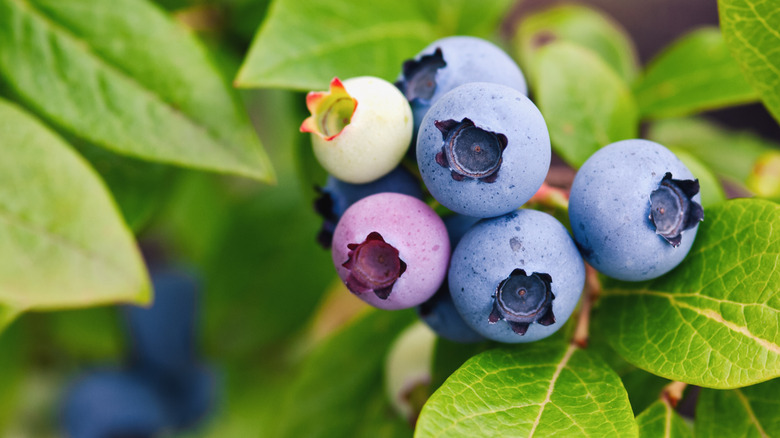The Edible Ground Cover That Thrives With Almost No Effort
At first glance, blueberry sod might not strike you as the most versatile pick. You might just see these dense, pre-grown rows of green as nothing more than crops ready to be harvested. However, there's more than meets the eye. This gem is versatile and good for more than just producing delicious fruit. Blueberry sod also serves as an effective, eco-friendly ground cover that's arguably more functional than traditional grass. It's great at suppressing weeds and reducing erosion, saving you the trouble of resorting to nasty herbicides and time-consuming fixes.
This adaptable plant boasts versatility across landscapes ranging from slopes to fields, and it can be installed by both farmers and novice gardeners. Whatever the reason for planting it, blueberry sod can serve as a time-saving, low-maintenance solution to your gardening needs. Plus, it adds a gorgeous appeal to your landscape, and it's a great way to bring more pollinators into your yard and garden. As long as your plants have enough sunlight and water, you'll be on your way to one of the most delicious ground covers you've ever seen.
How to grow blueberry sod, and what varieties to pick
Growing and caring for blueberry sod is simple and straightforward. Since the roots are already formed in these pre-grown rolls of sod, all you'll need to do is plant it into prepared soil and keep it well-watered. It requires well-draining soil, ideally with a pH between 4.5 and 5.5. Till and level the soil before laying down the sod. Once you've planted it, the next key step consists of ensuring that your plant has at least six hours of full sun per day, as well as a proper watering schedule of 1 to 2 inches weekly during the growing season. With these basics out of the way, your blueberry sod should thrive in no time.
In terms of what varieties to choose, there are several delicious varieties that will thrive in your garden and make an excellent ground cover. For those living in USDA plant hardiness zones 2 through 8, lowbush blueberry (Vaccinium angustifolium) is a great pick. This variety is prized for its compact size and sweet, delicious blueberries. It also aids in supporting the ecosystem, as it attracts birds and bees. If you live further south, particularly in USDA plant hardiness zones 6 to 9, creeping blueberry (Vaccinium crassifolium) is a better choice. It's also known to attract bees, songbirds, small mammals, and even butterflies. Both of these blueberry sod varieties thrive with little effort while acting as an aesthetically pleasing ground cover for anyone looking to refresh their backyard landscape on a budget.

